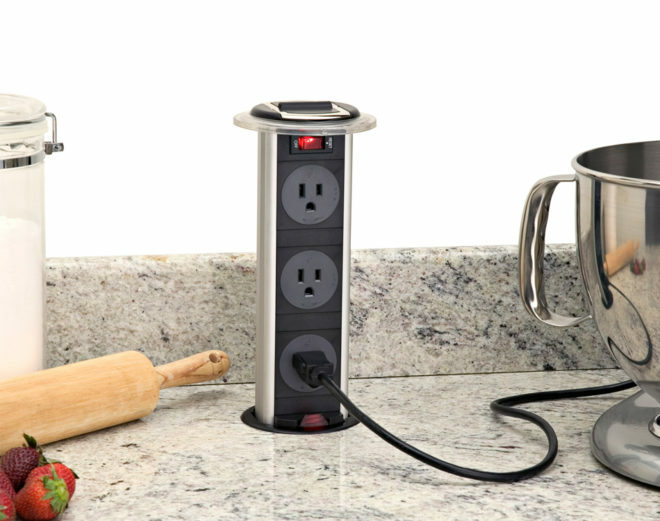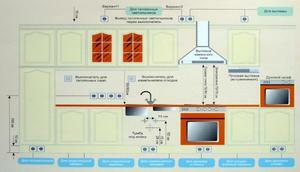 The problem of the lack of sockets throughout the apartment, including in the kitchen, is relevant all over the world. The reason is trivial: almost the entire housing stock was built before technology entered everyday life so much. Now there are many more electrical devices, and the physical shortage of power supplies is usually solved by improvised methods: tees and extension cords. In this article, we will look at their location.
The problem of the lack of sockets throughout the apartment, including in the kitchen, is relevant all over the world. The reason is trivial: almost the entire housing stock was built before technology entered everyday life so much. Now there are many more electrical devices, and the physical shortage of power supplies is usually solved by improvised methods: tees and extension cords. In this article, we will look at their location.
Planning early in the renovation

Attention! Earned on our website kitchen designer. You can familiarize yourself with it and design your dream kitchen for free! May also come in handy wardrobes designer.
A total replacement of electrics, planning a new electrical network and installing a large number of outlets occurs either when buying a new apartment, or during a major overhaul of an existing home. It is necessary to determine their number and location even before the start of all work - one of the first to be laid in the repair of an electrician. After finishing it will be too late to think: chipping and other installation work will require finishing the walls again.
The issue of placing outlets will become acute even when creating a design project for an apartment, since from their location will depend on the placement of the refrigerator and other household appliances, and therefore the design of the room generally.
What should the plan include?
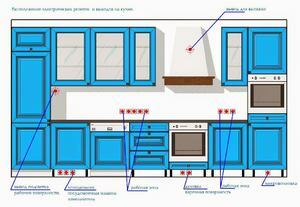 So that there will be no confusion in the future, you need to draw up a general plan of the kitchen, which should include the following information:
So that there will be no confusion in the future, you need to draw up a general plan of the kitchen, which should include the following information:
- The location of all large appliances that take up space is comparable to furniture: refrigerator, dishwasher;
- The location of the stove and the hood for it (even if there is already a socket for the stove, the hood will need its own electricity);
- Planned placement of smaller appliances such as a slow cooker, a pressure cooker, a toaster, a bread machine, a microwave oven;
- A place for a TV set, if it will be present;
- The location of the outlets used in cooking: for a blender and other manual equipment.
In addition, this room should have from one to several additional outlets. They are not related to the cooking process and the kitchen as such, but are necessary for a convenient and comfortable use of the room.
What additional seats may be required for:
- Vacuum the room, make wet cleaning (with systems like Karcher).
- Connect a laptop or other equipment.
- Charge your phone, tablet
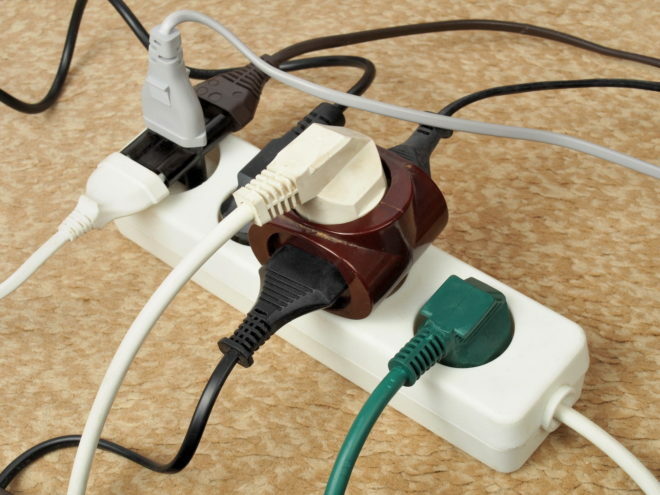
Considering that such power supplies are usually used for small household needs and a telephone, it is best to locate them in the area of the recreation area. In this case, not only the height of the sockets in the kitchen should be taken into account, but also their location should be carefully thought out.
It will be unpleasant if the phone's charging wires are constantly not enough, because the outlet is made too far and low from the sofa or chair. A planning error is especially painful for kitchens with a small area, where there are often no options for redevelopment after the completion of the renovation.
Calculation of the optimal amount
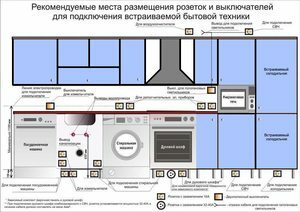 Having an idea of the planned number of electrical appliances, you can easily calculate how many and where exactly you need to place sockets right now. It is quite another matter to try to calculate the situation at least for several years ahead, to leave stock for new electrical appliances and unforeseen situations.
Having an idea of the planned number of electrical appliances, you can easily calculate how many and where exactly you need to place sockets right now. It is quite another matter to try to calculate the situation at least for several years ahead, to leave stock for new electrical appliances and unforeseen situations.
Fortunately, there is a calculation formula that will eliminate the need to guess on your own. These calculations are rather arbitrary, but there should not be a shortage of sockets at least in the first years after the repair. It is believed that their number should be a quarter higher than the number of constantly used electrical appliances.
Electrical appliances such as a refrigerator, microwave oven, extractor hood, TV or even a kettle are constantly plugged into the power grid. The sockets for all this equipment will always be busy, and you will not be able to use them. So, minus all these consumers, you should lay at least 25% in the reserve. If there are non-standard or personal needs (a server, an aquarium with lights and pumps, etc.), sockets for these needs are planned and laid separately.
What are the best outlets for the kitchen?
In the case of a kitchen, the layout includes not only indicators such as height and their location, but also characteristics. The following conditions are typical for the kitchen:
- Increased humidity during cooking;
- Temperature changes;
- Frequent use if small household appliances are actively used in cooking.
The sockets must have sufficient moisture protection to be safe to use in every possible kitchen environment.
Such models should:
- Belong to class IP 44 (or better in terms of protective performance);
- Have a seal and a protective cover.
It is especially important to install such outlets in places where the risk of water ingress is greatest: splashing from under the sink or during cooking, next to the work area. In places where the chance of water ingress is zero - for example, near a dining table, you can install the most common ones without additional protection.
If you have free funds, you can install more comfortable options:
- Built-in;
- Retractable;
- With child protection (many models have this option in the form of a protective curtain);
- With additional USB for mobile devices.
Routing rules
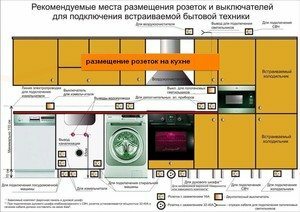 When distributing electricity, it is worth remembering that for uninterrupted operation and the absence of overloads in the network, the sockets must provide power that is twice the consumption of all devices. Moreover, such powerful electrical appliances as a stove and refrigerator must have their own wiring line and a circuit breaker.
When distributing electricity, it is worth remembering that for uninterrupted operation and the absence of overloads in the network, the sockets must provide power that is twice the consumption of all devices. Moreover, such powerful electrical appliances as a stove and refrigerator must have their own wiring line and a circuit breaker.
Naturally, all lines are connected through the machine. When connecting, it is required to immediately ground all electrical appliances with metal housings - this is a general safety rule applied throughout the apartment, and not just in the kitchen.
All electricity in an apartment must be grouped according to the scope and divided into circuit breakers in a protective shield. Groups of outlets supplying individual rooms can be brought out into one machine. This improves the overall security of the system.
For example, three machines can be responsible for electricity in the kitchen:
- For the stove;
- For the refrigerator;
- For other devices.
Installation height and switches
The exact location for the installation depends on the specific kitchen project, and in each apartment these locations are different. Their installation near the working area is made high: so that not only the furniture, but also the wires of the equipment do not interfere with the cooking process, so at what height to carry out the installation is purely a matter of each project. But near the dining table, electricity can be supplied just above the surface of the countertop, and 10 centimeters from the floor - depending on how convenient it is for residents and what kind of equipment will be connect.
In the kitchen, it makes sense to install built-in sockets in those places where they will be used only periodically.. The color of the plastic and the decoration can be matched to the finish, since the standard white color stands out vividly in almost any interior.
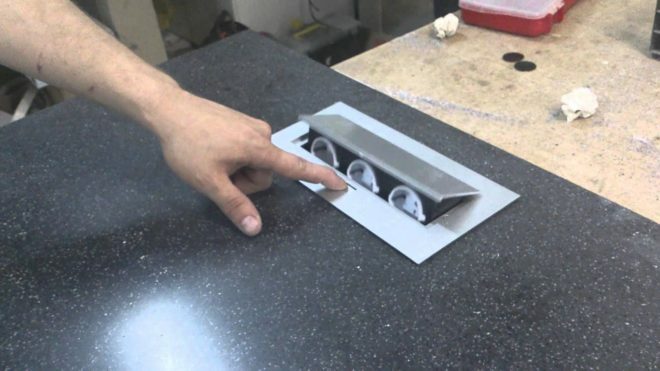
Before the start of the electrical wiring, you also need to decide on all the switches, as well as other electrical systems and devices, if any.
Switches also do not have to choose the classic white color: the market offers not only a wide range of materials and colors, but also many models with additional functionality. You can install beautiful touchscreens: the photos show that such models are very convenient and different almost perpetual service life, since they have no moving parts and no mechanical impact.
Installation is prohibited in the following locations:
- For built-in furniture or appliances;
- Any height above the sink;
- In bedside tables, wardrobes and other similar furniture.
At the moment, generally accepted standards for working with electricity prohibit building outlets in residential apartments before building appliances. In the case of using such a technique, the connection must be made from the bottom, and the switches will also be located there.
Layout and location of sockets in the kitchen (photo)
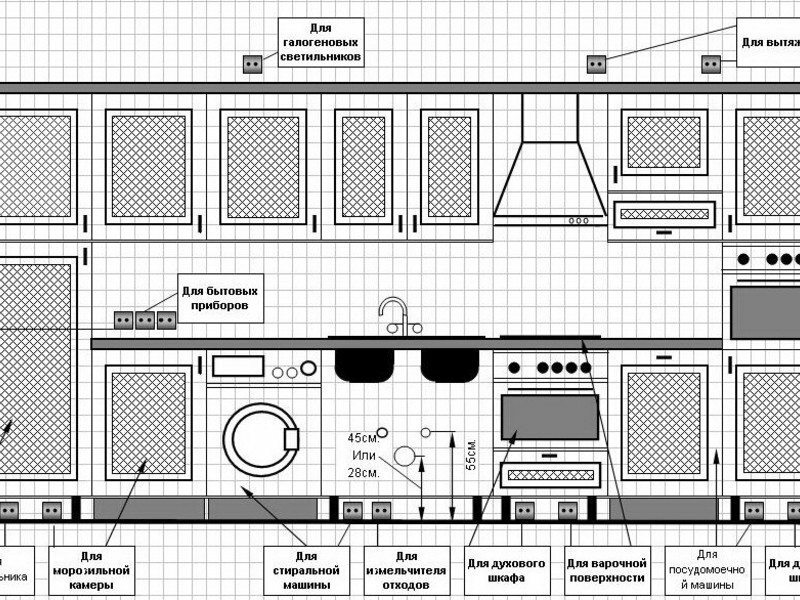
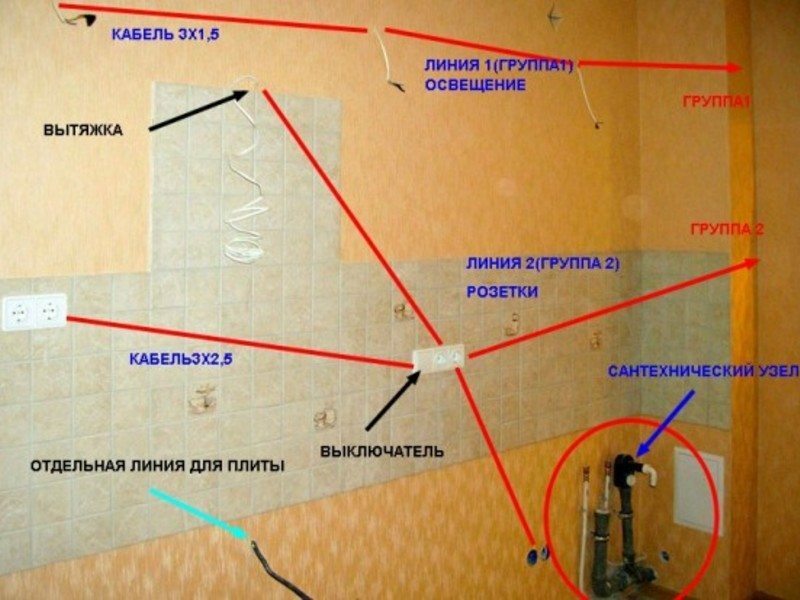
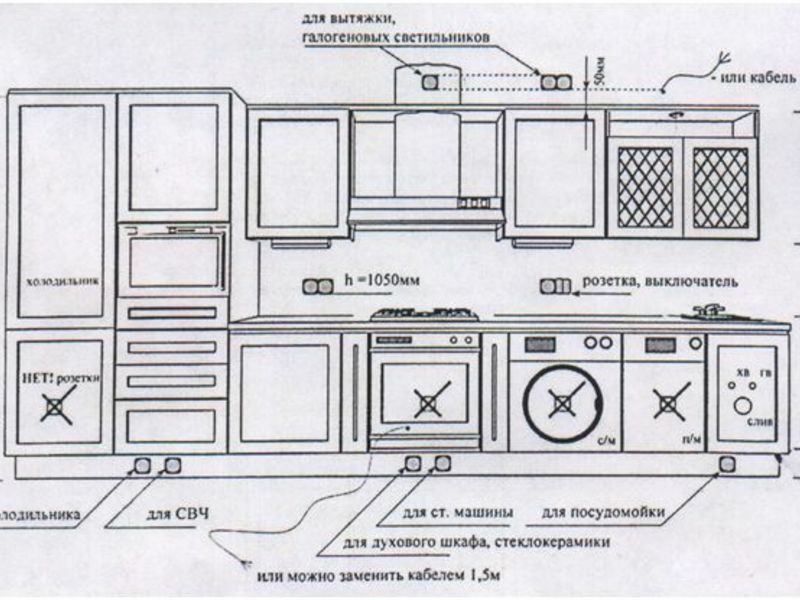
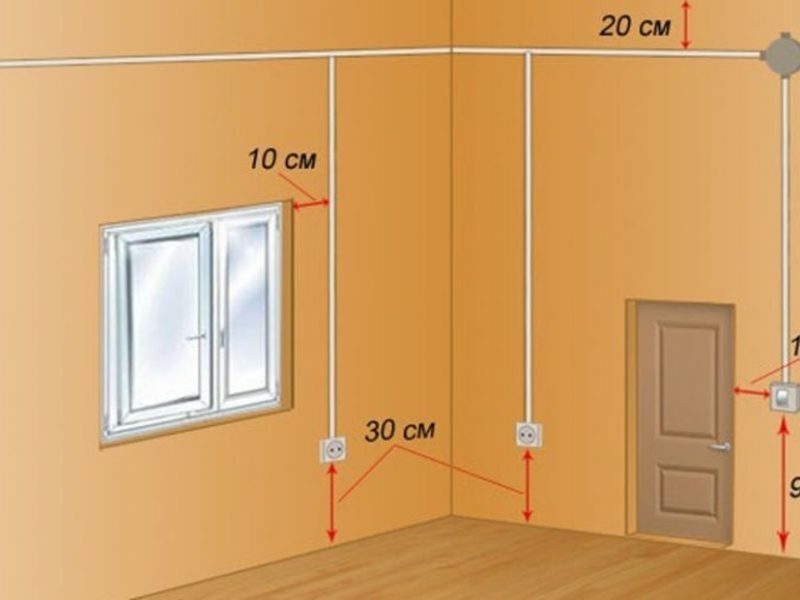
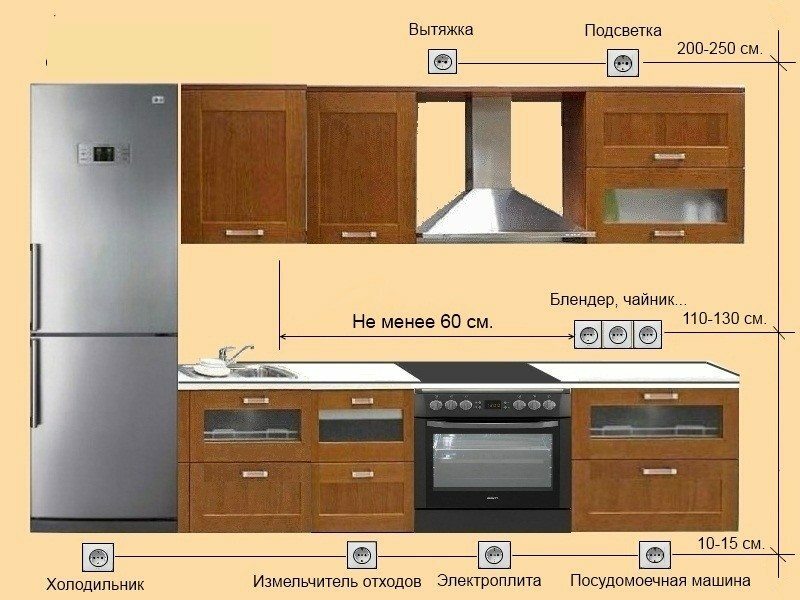
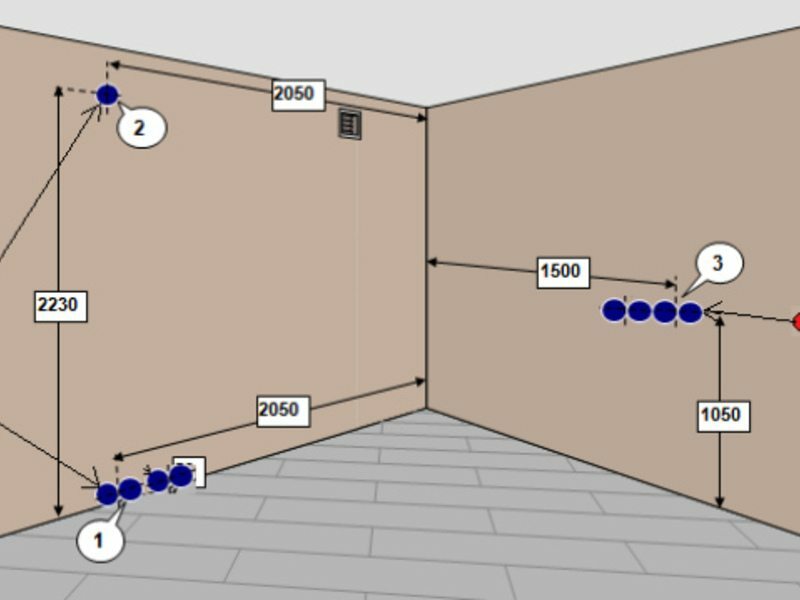
average rating 0 / 5. Number of ratings: 0
No ratings yet. Be the first to rate.
